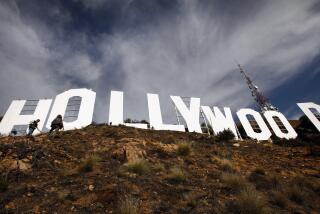Health Care in L.A. Area Is Big Business
- Share via
The Los Angeles area has the nation’s fifth-largest health-care economy in terms of employment, in large part because of the region’s thriving plastic surgery and dentistry businesses, according to a study to be released today by the Milken Institute in Santa Monica.
Health care accounted for 312,300 jobs, or nearly 8% of total employment in the area -- led by Kaiser Permanente, the largest private employer in Los Angeles with 31,000 workers, and Cedars-Sinai Medical Center with 8,600 workers, according to the national study, “America’s Health Care Economy.”
Only New York, Boston, Philadelphia and Chicago employed more health-care workers.
“Health-care employment in Los Angeles is larger than motion picture production and services, which employs about 180,000 people here,” said Ross DeVol, director of regional studies at the Milken Institute and lead author of the study.
San Diego, home to Scripps Research Institute and biotechnology firms Nanogen Inc. and Ligand Pharmaceuticals Inc., also earned a spot on the list at No. 17.
The study by Milken, a think tank, also found that health care accounts for $1 of every $20 generated in the Los Angeles economy.
“With the aging of the baby boomer population and with increased wealth, people are demanding, and often paying for, better health care,” DeVol said.
The Milken report says spending on drugs, hospitalization, nursing homes, medical tests and other health-care items doubled from 7% of U.S. gross domestic product in 1970 to more than 14% in 2002, and is projected to reach 17% of the nation’s economy by 2011.
In the Los Angeles area, where the population tends to be younger than the rest of the nation thanks to the large influx of working-age Latino immigrants, health care accounts for 5.2% of local GDP. The share may also be smaller than the national average because the area is home to a large and diverse medley of industries, including aerospace, apparel, entertainment and agriculture.
DeVol noted that dentistry disproportionately drove health-care employment in the region.
“Teeth whitening, for example, is much more popular here than elsewhere in the country, and part of that is driven by the entertainment industry here in Southern California,” DeVol said.
The study was based on government data from the Bureau of Labor Statistics and the Bureau of Economic Analysis that measured employment and output of health-care institutions in more than 300 U.S. cities.
Milken developed its rankings from what it called the health pole index, which was based on a combination of the region’s share in total national health-care employment and the degree to which the health-care sector contributes to the local economy in terms of jobs and dollars.
More to Read
Inside the business of entertainment
The Wide Shot brings you news, analysis and insights on everything from streaming wars to production — and what it all means for the future.
You may occasionally receive promotional content from the Los Angeles Times.










